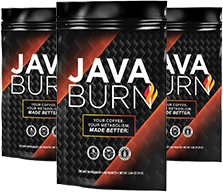One of the greatest misconceptions about fitness, particularly for folks attempting to change how their body seems, is that dropping weight is the key to getting the body of your goals. And whereas reaching a healthy weight may also help you look higher and decrease your threat for a number of illnesses, it received’t offer you that toned, muscular look many individuals are after. The solely manner to obtain that’s by building muscle and dropping—particularly—fats. Old-school lifters would possibly say you possibly can’t acquire muscle and lose fats at the similar time, however the idea of body recomposition proves in any other case.
Simply put, body recomposition is the course of of remodeling your physique by lowering body fats and gaining muscle at the similar time (this may not lead to a decrease weight, however it should lead to a more healthy, more-toned body). While many individuals consider this requires a strict calorie deficit, lengthy thought to be the gold customary for fats loss, famend nutrition researcher and fitness knowledgeable Alan Aragon says that’s a widespread false impression.
“Like 10 years ago, we thought, okay, you need a caloric surplus to gain muscle and you need a caloric deficit to lose fat,” he mentioned in a current interview with Stanford neuroscientist Andrew Huberman, Ph.D. “But what happened in these studies…was a lean-mass-gain-dominant recomposition. In other words, more lean mass was gained than fat was lost. So there were net gains in body mass by the end of these trials, which would very strongly imply that fat was lost in a caloric surplus.”
Related: The One Functional Exercise Trainers Use to Build Full-Body Strength and Stamina
And this course of isn’t only for competitive athletes. According to Aragon, the common person can efficiently recomp their body, too. The key? Research reveals that barely growing your calorie and protein consumption can help muscle development. Pair that with three to 4 strength training classes per week and a little bit of cardio, and you may be in your manner to reworking your physique.
“I would say sort of the simple and direct answer is you try to keep the caloric surplus pretty judicious,” Aargon mentioned. “So 10 percent above maintenance conditions, which could be somewhere between 200, possibly 300 calories above what you see as maintenance. And the common thread amongst these recomposition studies was that protein was very high…somewhere between a gram to a gram and a half per pound of body weight.”
Eating roughly your body weight in protein grams is a strong benchmark, however in accordance to Aragon, bumping that quantity even increased can speed up outcomes. When folks improve their protein consumption past the fundamentals, that’s when the actual shifts in strength, muscle, and physique have a tendency to occur.
“There’s a series of studies done by Joey Antonio and colleagues where they fed the subjects 400 to 800 calories above and beyond their habitual intakes, just in protein,” he says. “And either recomposition happened, or no significant change in body composition happened.”



















Discussion about this post